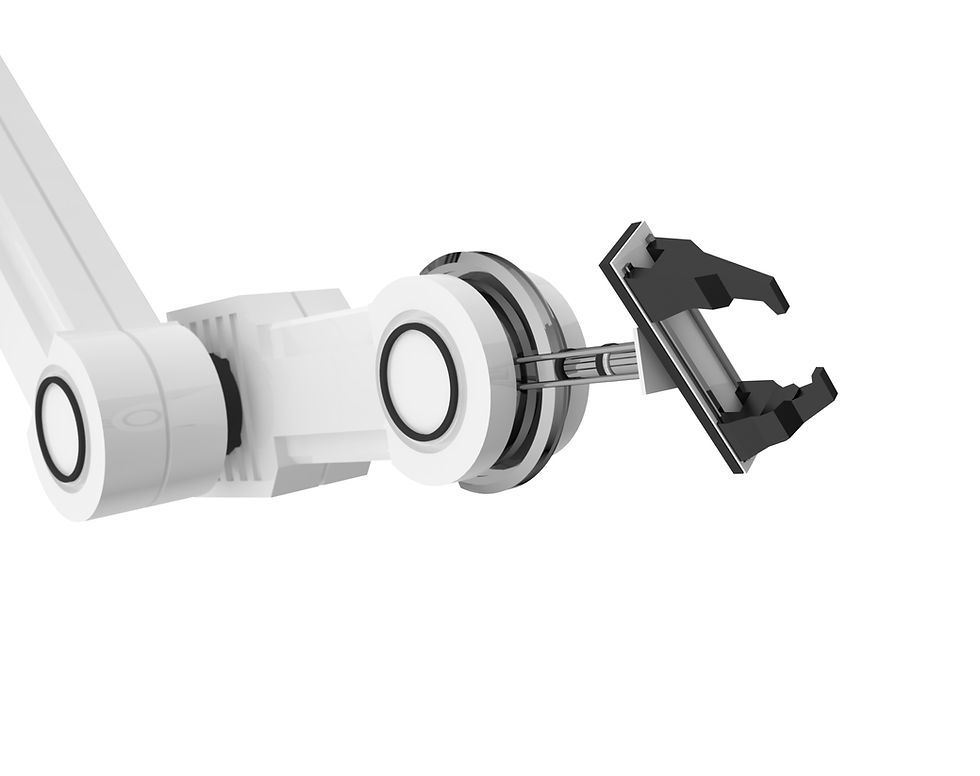Digital Reinvention of the Enterprise
- Karan Kamal
- Oct 5, 2021
- 5 min read
Digital transformation
A fundamental metamorphosis in how enterprises create new streams of business value for stakeholders by leveraging emerging technologies and applying digital ways of working to all aspects of business
The quantum of change powered by ‘Digital Transformation’ is massive and the future will continue to be shaped by disruptions that will fundamentally transform the business landscape.
This transformation is happening in the backdrop of unprecedented levels of change across the economic value chain mainly driven by the below trends:
Rise of the new, digitally conscious customer: What is interesting in today’s world is that change is being driven by the customer. Customers demand an ever-increasing level of customization and personalization. They expect products, services and content that can adapt and evolve based on what they’re doing anytime, anywhere and in the format or device of their choosing. The emerging paradigms of ‘omni-channel’ and ‘always-connected’ is shifting the focus towards customer centricity
Convergence of value chain: Traditionally, the roles of various players in the economic value chain was distinct. However, some of those lines are now blurring as businesses build new capabilities and competencies
Entry of new-age competitors: Over the past decade, a new breed of digital native companies has emerged rapidly transforming both the competitive landscape and pace of business. Their intrinsic use of digital technologies such as AI/ML, Cloud and Mobile means that they continue to evolve and scale at speeds that threaten the current market share of large, traditional organizations
Changing centres of economic gravity: The rise in the middle class across emerging economies (China, India, Indonesia, South Korea) is creating a huge consumer led demand thus making these counties very attractive markets for all major companies. Also due to lower operating costs, increased connectivity and availability of both low and high skilled labour, emerging economies are now playing a more influential role in the manufacturing value chain
Regulatory implications: Changing regulatory frameworks in the context of Trade Policies, Green Manufacturing, Emission Control, Cybersecurity etc. are creating challenges for the industry as enterprises need to revamp production, technology infrastructure and supply chains capable of complying with such regulations
Today, it is widely accepted that digital technologies will shift from being a driver of marginal efficiency improvement to a more transformational role that encompasses all aspects of the organization. This digital disruption is also creating a new set of business and technology imperatives for businesses globally:
It is in this context that digital transformation has become the new normal. Organizations (old and new) that want to stay competitive have to keep pace with ongoing innovation.
Enterprises should not be asking ‘whether they need to invest in digital transformation’. Rather, they need to actively explore how best they can embrace digital technologies across their organization in the most agile and successful manner.
Stakeholders will need to reimagine the future of their enterprises across the below 4 paradigms

3a. Smart Products
Interoperability, affordability and rapid proliferation of sensor technology is powering a new wave of connected, smart products that deliver value beyond the traditional ‘hardware’ offering. By creating a connected feedback loop, companies today can offer highly personalized and customized services to customers that constantly evolves with their needs. With the ability to respond immediately to their customer needs, manufacturers are not only increasing their top-line but also improving product quality and customer loyalty.
Smart Products are enabling a wide range of use cases including:
Remote Upgrades
Condition Monitoring
Preventive Maintenance
Connected Product Analysis
Warranty Cost Management
Recall Management
Smart Product Trends and Opportunities across industries
3b. Smart Plants
As physical products metamorphosize and transform into ‘Smart and Intelligent’ products, plants are also evolving to support these new-age requirements through integration of new applications, systems and platforms.
Defining the persona of a smart plant:
Visible where business, operational and production data is available in paperless flows and digital format (Real-time visibility of asset status)
Transparent where insights are generated by triangulating multiple sources of data across various manufacturing functions (Real-time monitoring of asset health parameters & ability to carry out root cause diagnostics)
Predictable where both past and current data is aggregated from multiple sources to make future predictions
Self-Optimized/ Autonomous where data driven insights are leveraged to drive automated decisions and actions without human intervention
The first step towards enabling a smart plant is to build integrations between the various functions in the manufacturing domain as depicted by IEC 62264

For instance, making Procurement function’s data available in real-time to Inventory Control helps reduce excess inventory.
In another example, creating integrations between Maintenance, Quality Assurance and Production Control can help reduce scrap through advanced root cause diagnostics.
While smart plants deliver the expected benefits of lower production costs, enhanced productivity, higher quality, better resource efficiency and greater process transparency, the real value lies in the potential to leverage data from across the enterprise, extracted through digital technologies, to redefine manufacturing as a fully autonomous function that is automatically able to respond to the changing production demands from stakeholders across the manufacturing value.
3c. Smart Processes
An extension of RPA technology, Smart Process Automation works in conjunction with artificial intelligence and machine learning to automatically execute both business and manufacturing tasks.
The current focus in to drive automation in processes to make them more transparent, efficient and automated. Some of the target business processes include:
Finance (Accounts Payable, Tax Accounting, Account Reconciliation and Fraud Detection)
HR (Processes across the employee lifecycle from recruitment and talent management to talent separation)
Audit (Compliance with standards such as IFRS, GAAP, GDPR etc.)
The end goal of enabling smart processes is to achieve a holistic integration of automation, advanced analytics, business data, and manufacturing operations to improve all aspects of production across the organizational value chain for greater efficiency.
3d. Smart People Practices
Industry 4.0 and digital transformation is as much about people as it is about plants and products. The context of smart people practices can be understood in the following ways:
a. Empowering the human and better integration of the worker into the intelligent enterprise: Technologies such as AR/VR augment the human’s capability to deliver greater value in the production shop-floor. Emerging technologies have the capability to deliver real-time data and analytics that enable workers to make better and more informed decisions
b. Driving intelligence across the employee life cycle: As enterprises undergo digital transformation and the demand for new age talent amplifies, it is equally important for organizations to reflect on how they might optimize their talent to improve productivity and efficiency. One way to achieve this is to elevate the employee experience by leveraging digital technologies across the employee lifecycle. Creating a better employee experience from the time of recruitment to performance management to talent separation through interactive tools, platforms and optimized HR processes will undoubtedly enhance employee productivity, brand loyalty and create enormous competitive advantage to the organization
Charting your Digital Transformation Strategy
As organizations compete in a more dynamic world filled with macroeconomic complexities, it is critical that they drive sustained efficiencies on a continuous basis.
To do so, they must understand that Digital Transformation is not just about interventions across small pockets of opportunities but about taking a broader view and adopting a more sustainable roadmap involving all key functions and technologies. It is also imperative to have leadership support, stakeholder alignment and a clearly defined governance and transformation program to avoid redundancies in effort and ensure a holistic implementation.
How can FutureFactor360 help
Regardless of where you are in your transformation journey, FutureFactor360 can support in accelerating your success outcomes and time to business value. Reach out to us to learn more about how our proprietary strategy frameworks, maturity models and technology solution accelerators can help you reimagine and enable your enterprise for the digital age.



Comments